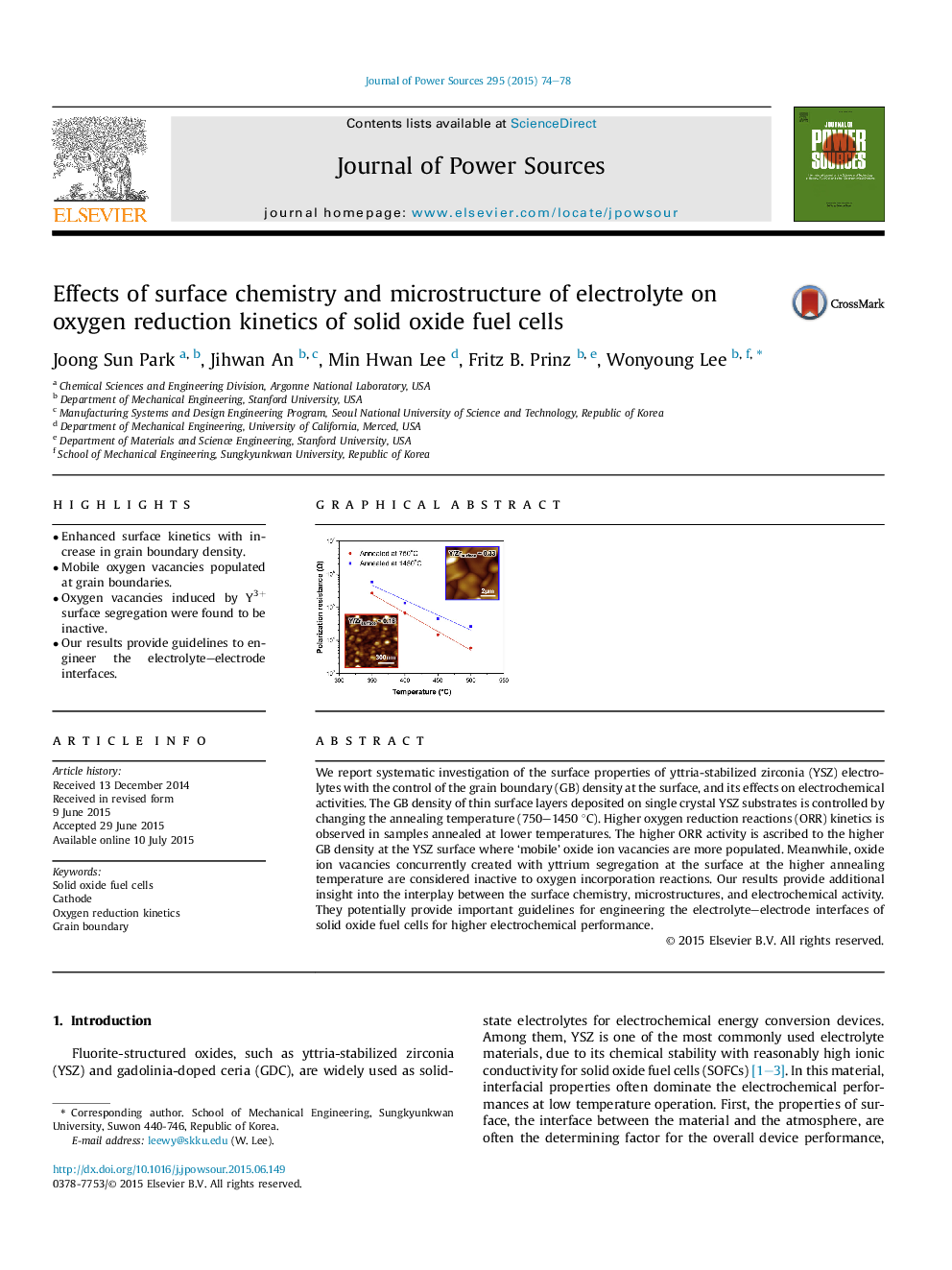| Article ID | Journal | Published Year | Pages | File Type |
|---|---|---|---|---|
| 1292749 | Journal of Power Sources | 2015 | 5 Pages |
•Enhanced surface kinetics with increase in grain boundary density.•Mobile oxygen vacancies populated at grain boundaries.•Oxygen vacancies induced by Y3+ surface segregation were found to be inactive.•Our results provide guidelines to engineer the electrolyte–electrode interfaces.
We report systematic investigation of the surface properties of yttria-stabilized zirconia (YSZ) electrolytes with the control of the grain boundary (GB) density at the surface, and its effects on electrochemical activities. The GB density of thin surface layers deposited on single crystal YSZ substrates is controlled by changing the annealing temperature (750–1450 °C). Higher oxygen reduction reactions (ORR) kinetics is observed in samples annealed at lower temperatures. The higher ORR activity is ascribed to the higher GB density at the YSZ surface where ‘mobile’ oxide ion vacancies are more populated. Meanwhile, oxide ion vacancies concurrently created with yttrium segregation at the surface at the higher annealing temperature are considered inactive to oxygen incorporation reactions. Our results provide additional insight into the interplay between the surface chemistry, microstructures, and electrochemical activity. They potentially provide important guidelines for engineering the electrolyte–electrode interfaces of solid oxide fuel cells for higher electrochemical performance.
Graphical abstractFigure optionsDownload full-size imageDownload as PowerPoint slide
